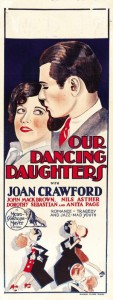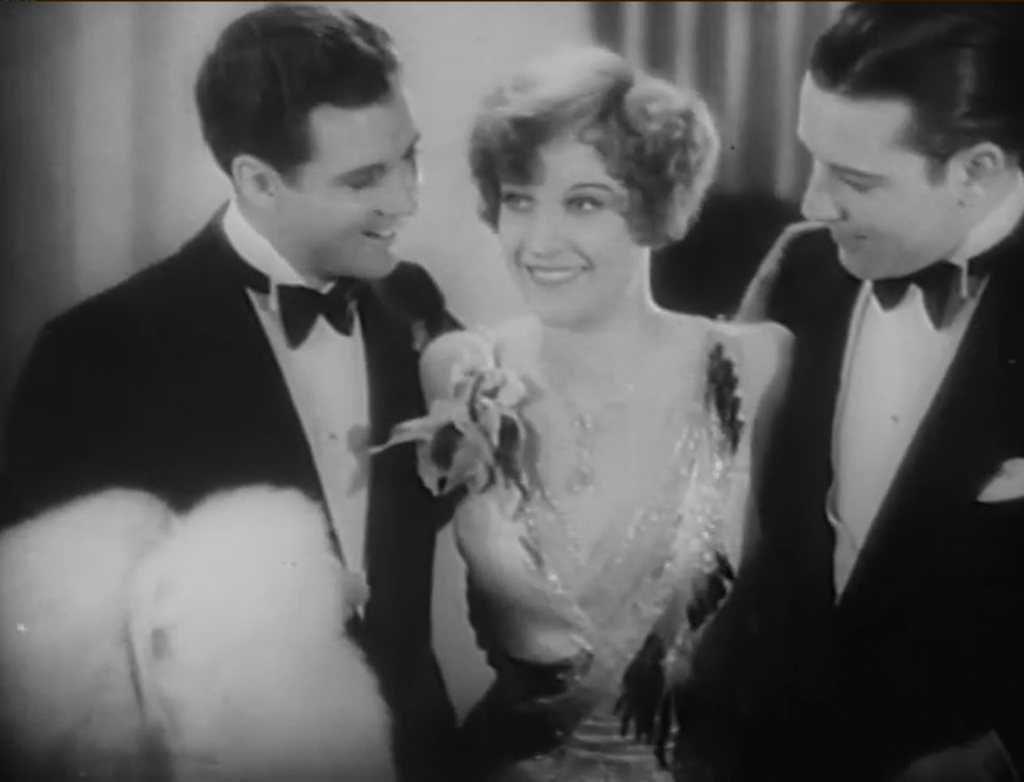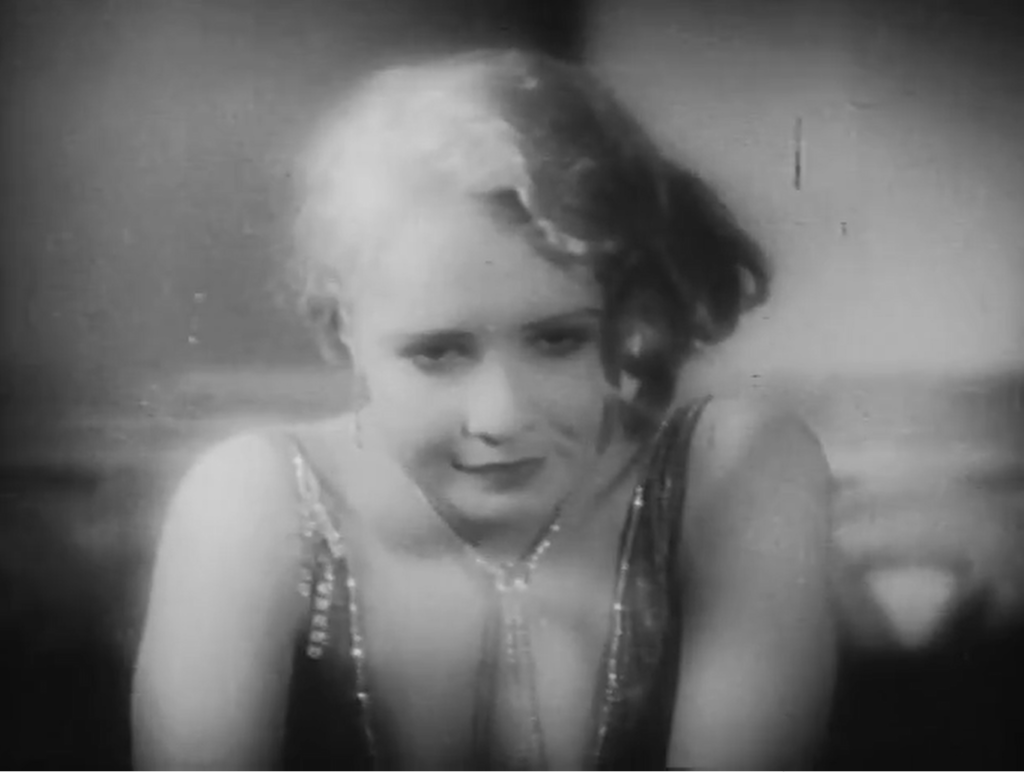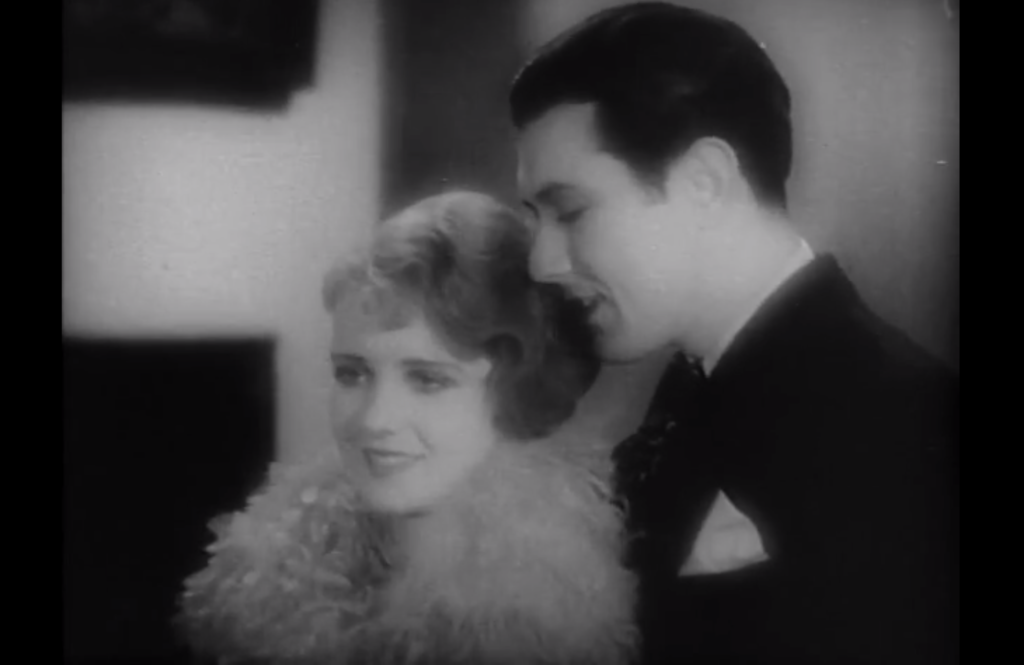“When it comes to marriage, men are still old-fashioned.”
|

Synopsis:
A fun-loving but decent flapper (Joan Crawford) is devastated when the man she loves (Johnny Mack Brown) marries a deceptively “innocent” gold-digger (Anita Page) instead.
|
|
Genres, Themes, Actors, and Directors:
- Gold Diggers
- Joan Crawford Films
- Love Triangle
- Silent Films
Review:
23-year-old Joan Crawford sparkles in this “part-sound” film about fun-loving flappers during the Roaring Twenties who find their desire for good times strictly at odds with their chances for happy marriage. Crawford’s character — a highly likable heroine who’s given a rough break but triumphs in the end — is allowed plenty of opportunities to dance the Charleston and show off her bubbly personality:

while blonde Anita Page as Crawford’s romantic rival is fine as well, particularly during her hilariously infamous final scene (“Women — women — why are you working?”).

The use of strategic background noise and musical numbers on the synchronized soundtrack is effective, adding to the overall ambiance of the era. While not one of Crawford’s best features, film fanatics will certainly be curious to check out Our Dancing Daughters at least once.
Redeeming Qualities and Moments:
- Joan Crawford as Diana Medford

- Anita Page as “Annikins”

Must See?
Yes, for its historical importance as Crawford’s “breakthrough” role.
Categories
Links:
|





2 thoughts on “Our Dancing Daughters (1928)”
A must. For what is essentially fluff, this is surprisingly effective, esp. once you get beyond the first third (which indicates little more than an F. Scott Fitzgerald-esque flapper tale).
Overall, we have a layered theme of deception here; some intentional, some not. On the intentional side, we see how one manipulative character (Page) deceives to get what she wants, while another, good-hearted character (Dorothy Sebastian, who for some bizarre reason I kept thinking was Bessie Love!) deceives to keep what she has. As for the unintentional, Crawford ‘deceives’ by putting on the face, free talk and footwork of a good-time gal – when in reality she’s much more down-to-earth than she lets on.
Josephine Lovett’s script is generally lively, sharp, richer than expected, and is served well by director Harry Beaumont.
I found myself esp. drawn to the sub-plot involving Sebastian and Nils Asther (look close and you’ll recognize him as the titular character in my favorite Capra film, ‘The Bitter Tea of General Yen’, released 5 years later). Sebastian makes the ‘mistake’ of telling Asther she has…had others in her life before him. She thinks he’s able to accept that until the situation proves otherwise once they’re married.
Crawford’s performance here is more assured than the one she gives in Beaumont’s ‘Dance, Fools, Dance’ (1931). Hers is not the best female role, though. Page very nearly pulls the film out from under her, and even Sebastian earns more sympathy.
A number of good-looking men parade before the camera in this film, but none beat the dreamy Johnny (here John) Mack Brown. You really believe this guy is a football star (which he actually was) cause he moves and acts with the confidence of one. His acting isn’t bad – he has some fine, subtle moments. (Odd how Brown got edged out of Hollywood’s mainstream by Clark Gable; but, then, Gable did have more of that desired he-man quality.)
This one is probably not going to stay with you – but it has weight in terms of cinema history.
NOTE: I don’t get the ‘part-sound film’ thing. In terms of dialogue, I caught one spoken line by a walk-on character, followed by a chorus of assent. Huh?
Oh, by the way – this was no doubt too scandalous for an intertitle (cause there isn’t one) but, pay attention, and you’ll ‘see’ Page call Crawford a slut! (Did Crawford NOT get to memorably do the same to someone until years later in ‘Autumn Leaves’? Hmm…)